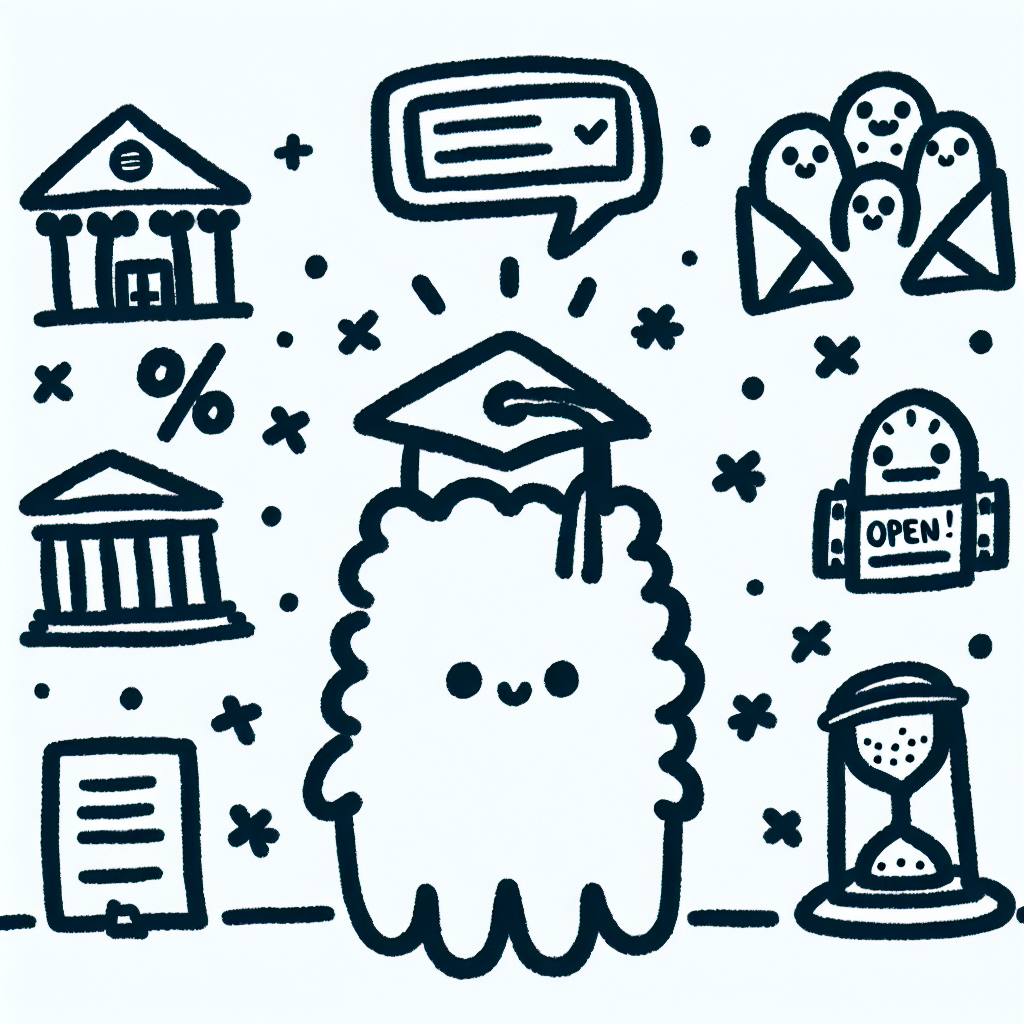Introduction
Preparing for college admissions in 2025 requires a clear understanding of how the admissions landscape continues to evolve. In recent years, colleges and universities have adjusted their evaluation processes, placing greater emphasis on holistic review, test-optional policies, and demonstrated interest. These shifts have made the application process more competitive and less predictable.
Strategic planning has become essential. As acceptance rates decline at many selective institutions, students must be intentional about building strong academic profiles, engaging in meaningful extracurriculars, and crafting thoughtful application materials. In 2025, applicants will need to navigate ongoing changes such as the continued impact of test-optional admissions, increased use of AI in application review, and greater attention to diversity and equity in enrollment decisions.
This article will guide students and families through the critical steps of preparing for college admissions in 2025, offering insights into current trends, practical strategies, and what to expect in this dynamic environment.

Understanding the College Admissions Landscape in 2025
In 2025, preparing for college admissions requires a clear understanding of the diverse range of institutions in the U.S. higher education system. Schools vary widely in terms of selectivity, student demographics, and overall enrollment trends.
The Selectivity Spectrum: From Open Enrollment to Ultra-Competitive
Colleges range from highly selective institutions to those with open enrollment policies. At the ultra-competitive end, acceptance rates are extremely low. For example, California Institute of Technology admits just 3.1% of applicants, while Harvard University has an acceptance rate of 3.5% (usnews.com). These statistics reflect intense competition and a need for exceptional academic and extracurricular credentials.
Conversely, some institutions offer open enrollment, admitting all qualified applicants. Schools like the Art Academy of Cincinnati and Blue Mountain Christian University have 100% acceptance rates (usnews.com). These colleges prioritize accessibility and may appeal to students seeking a more flexible admissions process.
Trends in Enrollment and Student Demographics
Another important aspect of preparing for college admissions in 2025 is recognizing demographic trends. There has been a noticeable increase in non-traditional students, particularly those over the age of 25 (usnews.com). This shift reflects broader changes in career development and lifelong learning.
Additionally, large public universities continue to grow in size and prominence. For example, California State University—Fullerton enrolls around 37,000 undergraduates, making it one of the largest in the country (usnews.com). These institutions often provide a wide range of academic programs and resources, appealing to a diverse student body.
Understanding these patterns is essential for students preparing for college admissions in 2025, as it helps align goals and expectations with the current educational environment.

Strategic Planning for College Applications
Strategic planning is a critical step in preparing for college admissions in 2025. It helps students align their academic profiles, career aspirations, and personal goals with the right institutions.
Self-Assessment and Goal Setting
The first step in strategic planning involves self-assessment. Students should evaluate their academic strengths and weaknesses by reviewing grades, standardized test scores, and feedback from teachers. This helps identify areas that may need improvement before applying.
Determining career interests is also vital. Students can explore different fields through internships, volunteer work, or informational interviews. Once career interests are clearer, students can align them with potential college majors, ensuring their academic path supports long-term goals.
Setting both realistic and aspirational goals allows students to stay motivated while maintaining a practical outlook. For example, a student might aim for a highly selective university while also applying to schools that more closely match their academic profile.
Building a Balanced College List
A well-rounded college list should include a mix of reach, match, and safety schools. Reach schools are those where admission is less likely based on the student's academic credentials. Match schools align well with the student’s qualifications, while safety schools are those where the student’s academic performance exceeds the institution’s typical admitted student profile.
When building this list, students should consider acceptance rates, academic programs, campus culture, and financial aid offerings. Institutional fit is just as important as selectivity.
Utilizing tools like the College Admissions Calculator can help students estimate their chances at various schools and refine their application strategy accordingly.
Understanding Institutional Priorities
Colleges often have institutional priorities that influence admissions decisions. These may include geographic diversity, aiming to admit students from a wide range of locations; demographic diversity, focusing on underrepresented racial, ethnic, or socioeconomic groups; and academic diversity, seeking students with varied interests and talents.
Legacy status and donor relationships may also play a role in admissions decisions. While not within a student’s control, understanding these factors can provide insight into how colleges build their incoming classes.
In recent years, many institutions have placed greater emphasis on admitting first-generation and underrepresented students. Awareness of these trends can help applicants tailor their applications and better understand how they may be viewed by admissions committees.

Academic Preparation and Testing
Course Rigor and GPA
A strong academic record remains central to preparing for college admissions in 2025. Students are encouraged to enroll in Advanced Placement (AP), International Baccalaureate (IB), and honors courses when available. These classes demonstrate a student's willingness to challenge themselves academically and provide admissions officers with insight into their academic readiness for college-level work.
Maintaining a high GPA, particularly in the junior and senior years, is critical. Colleges often place significant weight on the rigor of coursework in combination with the grades earned. A strong GPA across rigorous courses tells a consistent story of academic dedication and capability.
Standardized Testing Landscape in 2025
As of 2025, many colleges continue to implement test-optional policies, but some institutions have reinstated standardized test score requirements. Students should research the admissions policies of each college on their list to determine whether the SAT or ACT is required or recommended.
For those choosing or needing to submit scores, preparing with official resources from the College Board (for the SAT) and ACT, Inc. (for the ACT) is advisable. These official materials align most closely with the actual exams and are often free or low-cost.
Extracurricular and Personal Development
Beyond academics, colleges in 2025 continue to value well-rounded applicants who demonstrate leadership and sustained commitment. Involvement in extracurricular activities, whether through school clubs, sports, or community organizations, should ideally reflect a student's interests and growth over time.
Leadership positions, volunteer work, and passion projects are especially impactful when they show initiative and personal investment. Additionally, participation in summer programs, internships, or research opportunities can provide valuable experience and help students explore potential career paths while strengthening their applications.
Consistency and depth of involvement often matter more than the sheer number of activities. Demonstrating long-term commitment and meaningful engagement is key to standing out in the college admissions process.

Crafting a Standout Application
A standout application is essential when preparing for college admissions in 2025. Each component—essays, letters of recommendation, and activities—should work together to tell a cohesive and compelling story.
Personal Statement and Supplemental Essays
The personal statement is a critical opportunity to tell a compelling, authentic story that reflects who you are beyond grades and test scores. Admissions officers are looking for honesty, self-reflection, and a clear sense of identity. Avoid generic narratives and instead focus on specific experiences that have shaped your values or goals.
When writing supplemental essays, tailor each response to the specific college. Use concrete examples to demonstrate how your interests align with the school’s offerings. For "Why Us?" prompts, go beyond surface-level praise—reference specific programs, professors, or campus initiatives that resonate with your academic and personal interests.
Letters of Recommendation
Choose recommenders who know you well and can speak to your strengths, growth, and character. Teachers, counselors, and mentors who have seen your development over time are ideal. Once selected, provide them with context about your goals, activities, and accomplishments. A short resume or a written summary can help them write more detailed and personalized letters.
Activities List and Honors
When listing extracurricular activities and honors, focus on quality over quantity. Highlight the initiatives where you’ve made a significant impact rather than trying to fill every slot. Where possible, quantify your achievements—such as "raised $3,000 for local shelter" or "led a team of 10 students to develop a community tutoring program"—to show tangible results of your involvement. This helps admissions officers understand the depth of your contributions and leadership.

Navigating Financial Aid and Scholarships
Understanding the FAFSA and CSS Profile
For students preparing for college admissions in 2025, understanding the Free Application for Federal Student Aid (FAFSA) and the CSS Profile is critical. The FAFSA opens on October 1st of each year, but for the 2024–2025 academic year, the launch has been delayed to December 2023 due to updates in the system. Students should gather key documents early, such as Social Security numbers, federal tax returns, W-2s, and bank statements. The CSS Profile, required by many private colleges, also asks for similar financial details but may consider additional factors like home equity.
To maximize aid eligibility, students should submit the FAFSA and CSS Profile as soon as possible after they become available. Early submission increases the chances of receiving aid, as some funding is awarded on a first-come, first-served basis. It's also important to review the specific requirements of each college, as deadlines and processes can vary.
Types of Aid Available
Financial aid falls into two main categories: merit-based and need-based. Merit-based aid is awarded for academic, athletic, or artistic achievements, while need-based aid is determined by a family's financial situation. Students preparing for college admissions in 2025 should explore all sources of aid, including:
- Federal aid: Grants, loans, and work-study programs available through the government.
- State aid: Financial assistance provided by a student's home state, often requiring separate applications.
- Institutional aid: Scholarships and grants offered by colleges themselves.
- Private scholarships: Awards from foundations, businesses, and community organizations.
Each type of aid has different eligibility requirements and application processes, so students should take time to research and apply accordingly.
Applying for Scholarships
Applying for scholarships is a key strategy in preparing for college admissions in 2025. There are thousands of scholarships available at the local, national, and niche levels. Local scholarships may have fewer applicants and can be easier to win. National scholarships often offer larger awards but come with greater competition. Niche scholarships target specific interests, backgrounds, or career goals.
To stay organized, students should create a scholarship calendar that includes deadlines, essay requirements, and submission guidelines. This helps manage multiple applications and ensures that no opportunity is missed. It's also beneficial to reuse and adapt application materials when possible to save time and effort.

Special Considerations for Non-Traditional and Diverse Applicants
Adult and Returning Students
When preparing for college admissions in 2025, adult and returning students—typically those over age 25—should consider institutions that offer tailored support. Many colleges now recognize the specific challenges faced by older students, such as balancing family responsibilities and employment. Some schools are ranked specifically for their strong support of students over 25, as listed by U.S. News & World Report.
In addition to institutional support, these applicants should focus on bridging any academic gaps by taking refresher courses or community college classes. Highlighting real-world experience in applications and essays is also essential. Professional achievements, volunteer work, and life challenges can all demonstrate maturity, resilience, and readiness for academic success.
First-Generation and Underrepresented Students
First-generation and underrepresented students preparing for college admissions in 2025 should actively seek colleges with strong support programs. These include first-year experience programs, academic advising, and cultural centers that help foster a sense of belonging. Many institutions also offer scholarships and targeted outreach for these populations.
Community-based organizations and mentorship programs can play a crucial role in navigating the admissions process. These resources often provide guidance on application strategies, financial aid, and college readiness. Leveraging such support can improve access and increase confidence during the admissions journey.

Final Preparations and Decision-Making
Interview Preparation
As part of preparing for college admissions in 2025, students should be ready for potential alumni or admissions interviews. These interviews are typically conversational and are meant to get a sense of the applicant’s personality, interests, and fit for the school.
Common questions may include:
- Why are you interested in this college?
- What are your academic interests?
- How do you spend your time outside of school?
- Tell me about a challenge you've faced and how you handled it.
Best practices include dressing appropriately (even for virtual interviews), being punctual, researching the school beforehand, and having thoughtful questions prepared for the interviewer. Practicing with a counselor or mentor can also help increase confidence and clarity.
Campus Visits and Virtual Tours
Whether in-person or virtual, campus visits are a valuable part of preparing for college admissions in 2025. They allow students to evaluate the academic, social, and cultural environment of each school. During visits, it is important to attend information sessions, sit in on a class if possible, and explore residence halls and student activity centers.
Students should ask questions such as:
- What support services are available for first-year students?
- How accessible are professors outside of class?
- What do students do on weekends?
Virtual tours can often include live Q&A sessions, student panels, and interactive maps. These resources help students understand the atmosphere and community, even if they cannot visit in person.
Making the Final Decision
Once acceptance letters arrive, making the final decision involves comparing financial aid packages carefully. Students should look beyond the total award amount and consider factors such as loan terms, work-study opportunities, and grant versus loan proportions.
It’s also a time to reassess long-term academic and personal goals. Consider how each college's programs, campus culture, career services, and alumni network align with those goals. Making a pros and cons list or speaking with current students and advisors can provide clarity during this important step in preparing for college admissions in 2025.

Conclusion
Preparing for college admissions in 2025 requires more than checking boxes and meeting deadlines—it’s about embracing the journey as a meaningful part of personal growth. While the end goal may be gaining acceptance to a desired institution, the process itself helps students develop skills in time management, self-reflection, and decision-making that are valuable far beyond college.
Staying adaptable and resilient is essential amid ongoing changes in admissions policies, testing requirements, and financial aid landscape. Flexibility in response to shifting expectations—such as test-optional trends or changes in FAFSA timelines—can make a significant difference in navigating the admissions landscape effectively.
Students and families don’t have to face this journey alone. High school counselors, college planning websites, virtual workshops, and peer support networks all serve as valuable resources. Staying informed and connected to updated information ensures that applicants remain empowered through every step of preparing for college admissions in 2025.

Additional Resources and Tools
When preparing for college admissions in 2025, having access to reliable resources and tools can make the process more manageable and informed. Below are several curated links that can help students and families better understand the landscape of college admissions:
- Colleges with the Lowest Acceptance Rates: Reviewing schools with the most competitive admissions can help applicants gauge the level of selectivity they may face.
- Colleges with the Highest Acceptance Rates: Understanding which schools have higher acceptance rates can provide students with more options and safety school considerations.
- Colleges with the Most Undergraduates: Schools with large undergraduate populations may offer diverse programs and extensive campus resources.
- Colleges with the Most Students Over Age 25: For nontraditional students preparing for college admissions in 2025, this list highlights institutions with strong adult student communities.
- College Admissions Calculator: This tool helps students estimate their chances of admission based on GPA, test scores, and other factors, offering personalized insight during the application process.
Using these resources can support a strategic and realistic approach to preparing for college admissions in 2025.














